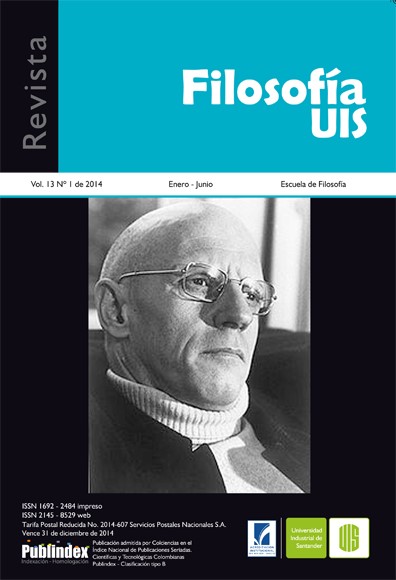About the aesthetic cognitivism in Aristotle. Objections to the interpretation of mimesis as intellectual clarification
Published 2014-04-29
Keywords
- Aesthetic cognitivism,
- art,
- mimesis,
- knowledge,
- value
- Aristotle ...More
How to Cite
Copyright (c) 2014 Esteban Guio Aguilar

This work is licensed under a Creative Commons Attribution 4.0 International License.
Abstract
The cognitivist conception of art argues that the artwork is able to provide knowledge of the world and this function is part of its artistic value. Theorists who defend this perspective agree in pointing to Aristotle as the first representative of aesthetic cognitivism. This agrees with the interpretation of mimesis as intellectual clarification advanced by Leon Golden from the study of Poetics. However, this interpretation is inconsistent with numerous passages in the Aristotelian work. In this sense, the present work aims to object the alleged cognitivism in Aristotle about art and mark, show, contrariwise, that in Poetics the possibility of assessing the mimetic art from purely aesthetic qualities is mentioned.
Downloads
References
- Aristóteles (2005). Poética. Buenos Aires: GZ.
- Aristóteles (2007). Política. Buenos Aires: Losada.
- Beardsley, M. C. (1981). Aesthetics: Problems in the Philosophy of Criticism. Indianápolis: Hackett.
- Gaut, B. (2005). “Art and knowledge”. En J. Levinson (ed.). The Oxford Handbook of Aesthetics. Nueva York: Oxford University Press.
- Gaut, B. (2007). Art, Emotions and Ethics. Nueva York: Oxford University Press.
- Golden, L. (1962). “Catharsis”. Transactions and Proceedings of the American Philological Association. Volumen 93. pp. 51-60.
- Golden, L. (1969). “Mimesis and katharsis”. Classical Philology. Volumen 64 (3). pp. 145-153.
- Golden, L. (1976). “The clarification theory of katharsis”. Hermes. Volumen 104 (4). pp. 437-452.
- Graham, G. (1997). Philosophy of the Arts. An Introduction to Aesthetics. Londres: Routledge.
- Kieran, M. y McIver Lopes, D. (eds.) (2006). Knowing Art. Essays in Aesthetics and Epistemology. Dordretch: Springer.
- Lamarque, P. y Olsen S. T. (1994). Truth, Fiction and Literature. Oxford: Oxford University Press.
- Lamarque, P. (2006). “Cognitive values in the arts: Marking the boundaries”. En M. Kieran (ed.). Contemporary Debates in Aesthetics and the Philosophy of Art. Oxford: Lackwell.
- Lear, J. (1988). “Katharsis”. Phronesis. Volumen 33(3). pp. 297-326.
- Platón (1985). “Sofista”. Diálogos V. Madrid: Gredos.
- Platón (1988). “Fedón”. Diálogos III. Madrid: Gredos.
- Stolnitz, J. (1992). “On the cognitive triviality of art”. British Journal of Aesthetics. Volumen 32. pp. 191-200.
